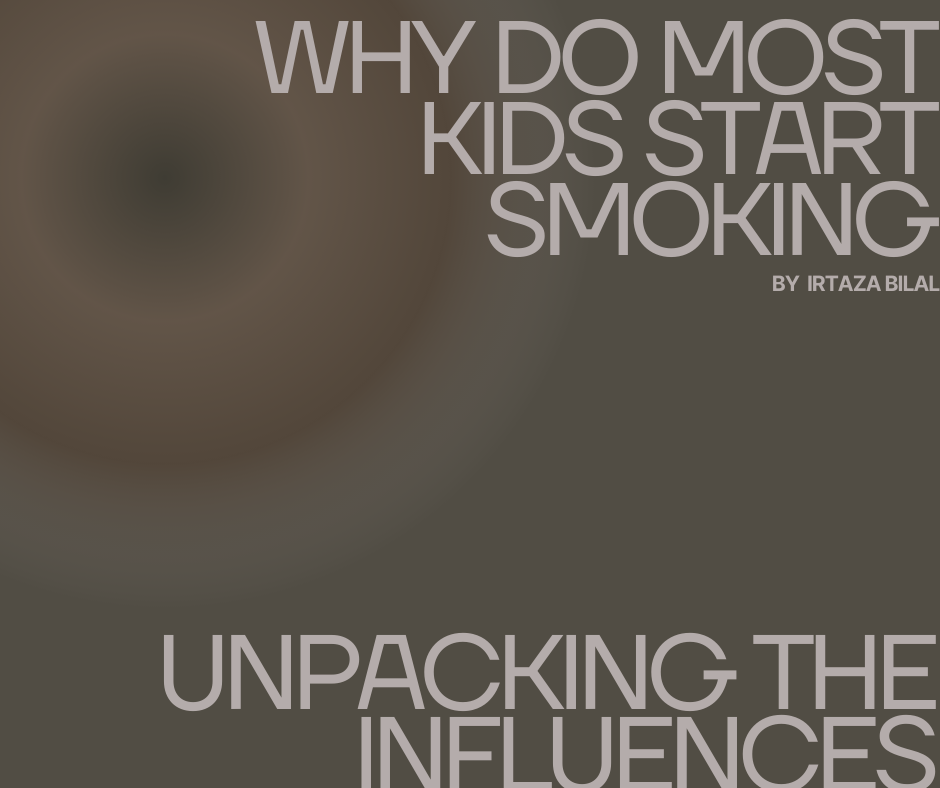In a world that constantly emphasizes the importance of health and wellness, it’s puzzling to see many teenagers picking up a habit that is well-known for its detrimental effects. #SmokingHabits #Teenagers #YouthChoices
Smoking remains a significant public health concern globally, with millions of lives lost each year due to tobacco-related illnesses. The alarming fact is that many of these smokers started their journey with this addictive habit during their adolescent years. But why do most kids start smoking in the first place? Let’s delve into the intricate web of factors that contribute to this concerning trend.
- Peer Pressure: #PeerPressure The influence of friends cannot be underestimated. Teenagers often want to fit in, and if smoking is considered “cool” in their social circle, they may succumb to peer pressure to light up.
- Advertising and Media: #TobaccoAds #MediaInfluence Tobacco companies have historically targeted young audiences through clever marketing campaigns and advertisements. Even though regulations have tightened, media exposure can still glamorize smoking.
- Family Influence: #FamilyInfluence Growing up in a household where one or both parents smoke can normalize the behavior for children. They might perceive smoking as a socially acceptable habit.
- Stress and Coping Mechanisms: #StressRelief The pressures of adolescence, such as academic stress, relationship issues, or family problems, can drive some teenagers to seek relief in smoking. Nicotine provides a short-term sense of calm, which can be tempting during turbulent times.
- Curiosity and Rebellion: #TeenCuriosity #Rebellion Adolescents are naturally curious and inclined to explore new experiences. Some may try smoking out of curiosity or as an act of rebellion against authority figures.
- Lack of Awareness: #TobaccoEducation Insufficient education about the dangers of smoking can leave teenagers uninformed about the long-term health consequences, making them more susceptible to trying it.
- Accessibility: #EaseOfAccess Easy access to tobacco products can play a significant role. If cigarettes are readily available to teenagers, the likelihood of experimentation increases.
- Socioeconomic Factors: #SocialFactors Economic disparities can influence smoking rates among young people. In some cases, lower-income families may struggle to afford tobacco cessation programs, making it harder for their children to quit smoking.
- Cultural and Regional Influences: #CulturalFactors In certain cultures and regions, smoking might be deeply ingrained in social traditions or norms, making it difficult for young individuals to resist the allure.
- Lack of Positive Alternatives: #HealthyChoices Sometimes, the absence of constructive and engaging activities for teenagers can lead them to experiment with risky behaviors, including smoking.
Understanding these factors is crucial for developing effective strategies to prevent smoking initiation among youth. Comprehensive education, strong support systems, and policies that restrict tobacco advertising and sales to minors are some steps that can make a difference. #PreventTeenSmoking #YouthHealth
In conclusion, the reasons why most kids start smoking are multifaceted and complex. It’s essential to address these underlying factors and provide the necessary resources to steer teenagers away from this harmful habit. By doing so, we can pave the way for a healthier, smoke-free future for the generations to come.

